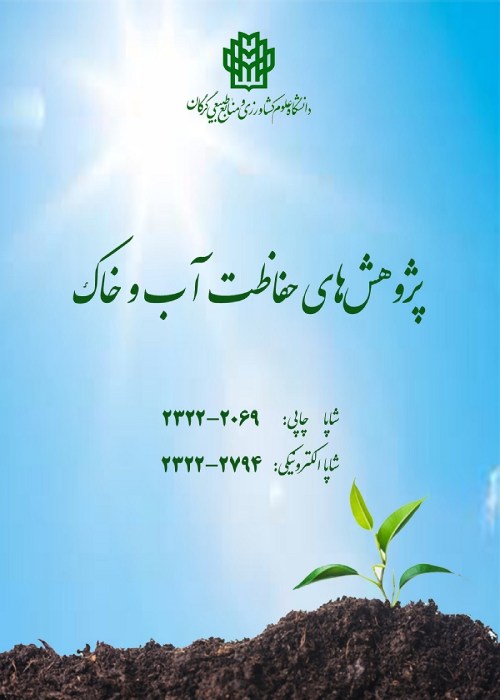Analyzing the Interaction of Agriculture and Industry Sectors in Water allocation with the Non-Cooperative Game Approach
Water resource management is often associated with conflicts such as the lack of satisfaction of water users with the amount of water allocated to them. Different stakeholders are involved in water resources allocation, and the water allocation to each of them affects the type of their strategic behavior.The game theory is a method for studying the strategic behavior of decision makers in water resource issues with the goal of developing appropriate strategies and can be used in modeling water allocation. In this paper, the non-cooperative game theory by application of stability definitions is considered for the modeling of the bilateral agreement by the industry and agriculture sector in unequal conditions.
In this study, the water allocation issue has been investigated by various stability definitions. Each of two industry and agriculture sectors needs to increase the amount of water to expand their activities. The agricultural sector is able to share its water to the industrial sector in exchange for the cost, while the industry can provide agricultural machinery and equipment in return for payment. The agricultural sector has two strategies, water sharing and no water sharing. While the industry sector also has two payment and no payment strategies that can take each one. In order to solve the problem, linking this game and another game in which the industry sector has advantages than the agricultural sector can be proposed. In this case, the exclusive privilege of each sector are considered, in which case each of the two agricultural and industrial sectors will benefit from the cooperative game and will less willingness to engage in non-cooperative behavior.
In this study the industry and agriculture sectors can play in the game in three ways: 1- They have both cooperative behavior. 2- Both non-cooperative behaviors. 3- One side has cooperative behavior and the other has non-cooperative behavior. Although both industry and agriculture sectors may have payments to each other, but the outcome with payment, according to the Nash and Limited-Move and Non-Myopic stabilities, is not stable. The results show that financial payments in this interconnected game are not perfect solution. When the payment is considered impractical, all related strategies can be eliminated. So the interconnected game becomes smaller.Each of the two sectors of agriculture and industry does not have the desire to change the cooperative behavior due to possible threats from the other part. In other words, if the agricultural sector decides to change its behavior to increase its outcome, the industry sector has changed its decision. Therefore, the agricultural sector will not shift its strategy from cooperative to non-cooperative behavior. This is precisely the behavior that is consistent with the GMR, SMR, SEQ, Limited-Move, and Non-Myopic stabilities.
In this research, the non-cooperative game theory and stability definitions have been used to model water allocation and bilateral agreement by the industry and agriculture sectors. The concept of Nash stability in finding the ultimate solution to water resource problems, which is often not a single-player game with dynamic nature, may fail. Non-Myopic stability simulates a player's behavior by understanding the interactions among decision-makers, which may be inappropriate for water resource issues, because players cannot take more than a few moves and react in the future in the real-world. Other stability definitions can better predict the possibility of solving the water conflict. The application of these stability concepts can improve the efficiency of conflict resolution models. When there is uncertainty about the behavior of players, the application of different stability concepts is useful and can provide a suitable solution for better decision making in water resource management.
- حق عضویت دریافتی صرف حمایت از نشریات عضو و نگهداری، تکمیل و توسعه مگیران میشود.
- پرداخت حق اشتراک و دانلود مقالات اجازه بازنشر آن در سایر رسانههای چاپی و دیجیتال را به کاربر نمیدهد.



